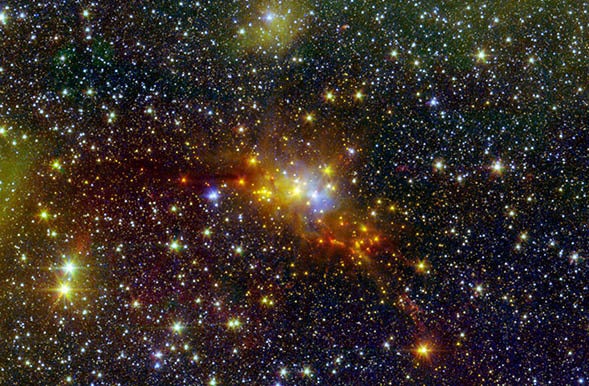The dark patch to the left of center is swaddled in so much dust that even the infrared light is blocked. It is within these dark wombs that stars are just beginning to take shape.
Called the Serpens Cloud Core, this star-forming region is located about 750 light-years away in Serpens, a constellation named after its resemblance to a snake in visible light. The region contains only stars of relatively low to moderate mass, and lacks any of the massive and incredibly bright stars found in larger star-forming regions like the Orion Nebula (M42). The Sun is a star of moderate mass. Whether our star formed in a low-mass stellar region like Serpens or a high-mass stellar region like Orion is an ongoing mystery.
The inner Serpens Cloud Core is remarkably detailed in this image, which was assembled from 82 snapshots representing a whopping 16.2 hours of Spitzer observing time. The observations were made during Spitzer’s “warm mission,” a phase that began in 2009 after the observatory ran out of liquid coolant, as planned.
Most of the small dots in this image are stars located behind or in front of the Serpens nebula.










